theory driving test
1/184
There's no tags or description
Looks like no tags are added yet.
Name | Mastery | Learn | Test | Matching | Spaced |
|---|
No study sessions yet.
185 Terms
Junctions
meeting point of roads
Roundabouts
T-junctions (where a road meets another road)
Crossroads
Merging lanes
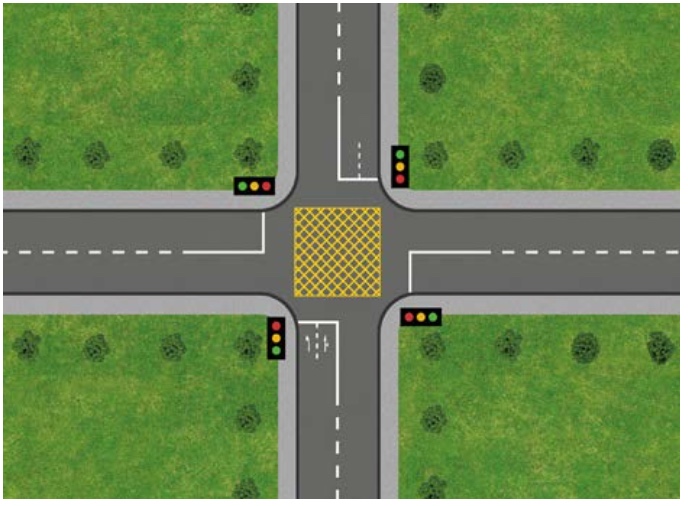
crossroad
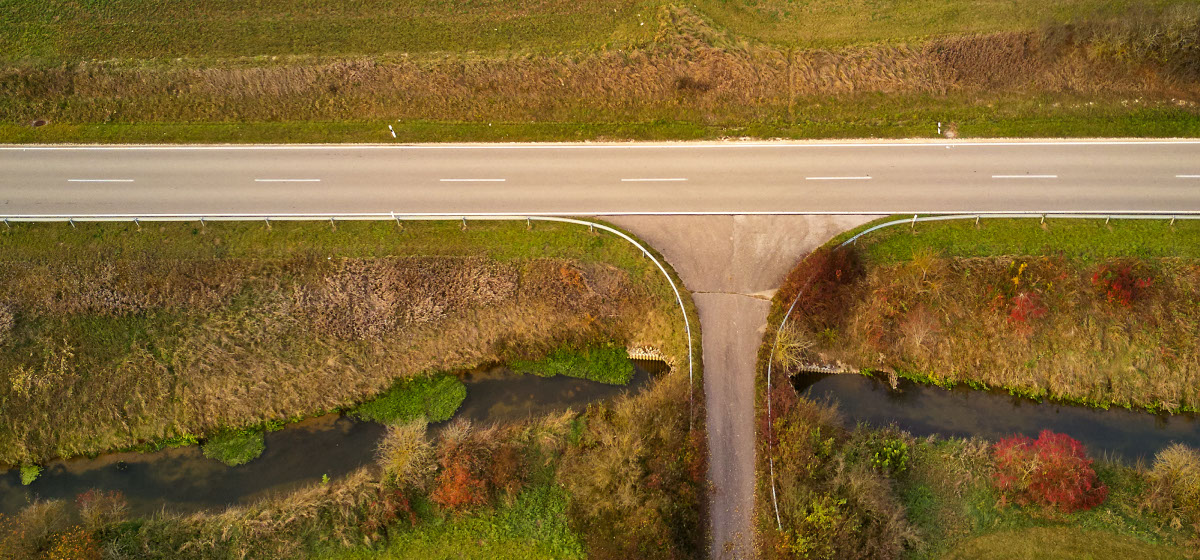
T-junctions
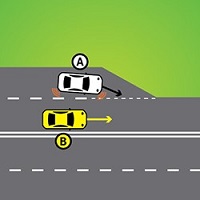
merging lanes
not controlled
Not Controlled = No signals, no signs, no directions. You decide priority using rules.
When does the left hand rule apply?
At road junctions and intersections not controlled.
Priority has to be given to the vehicle from the left
What is the turning rule?
When turning left at a crossroad, you must give way, to oncoming vehicles
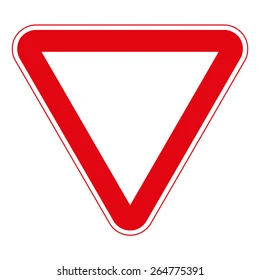
GIVE WAY:
Slow down, be ready to stop, only continue if clear. You must allow traffic already on the road (or coming from another direction) to pass before you proceed.
What is the main road rule?
Entering a primary/priority/main road you must give way or stop to traffic approaching from both left and right
What is the exit or entering rule?
You must give way to all other traffic whenever you exit a prarking lot or a petrol station
What is the obstruction rule?
in the event of a traffic jam, obstructing (blocking) a crossroad or walkway is prohibited
what is the bus rule?
Buses leaving a bus stop have priority INSIDE the city limits
What is Zipper Principle?
Give chance to vehicles to enter in road alternately even though a road sign may indicate that the approaching traffic has the priority
Simple Words:
“Even if it’s technically your turn, you still have to take turns like a zipper.”
🚘🚗🚘🚗 = smooth flow
🚘🚘🚘 + 🚗🚗🚗 = traffic jam
Uncontrolled junction
no signs or lights
Free Exit
a path that lets you leave the junction smoothly without stopping or waiting.
Ex. You are at a roundabout, and the exit lane you want to take:
Is completely clear
Has its own lane (not merging immediately with other traffic)
You can simply continue driving without giving way
Controlled Exit
Ex. If you have:
A give-way sign
A signal
Oncoming vehicles with priority
→ Then it is not a free exit; you must stop or give way.
Flashing amber light (single, not 3 lights just one)
reduce the speed
look for any road user and if any, give way.
Where are you most likely to find a flashing amber light(single)?
Pedestrian crossing
Free exits from junctions
The road work-areas
lashing amber light is usually used at uncontrolled crossings, free exits, or roadworks (construction areas) as a warning.
controlled crossing
It is controlled by lights or police → you follow their instructions.
Uncontrolled crossing
No one is controlling → you must be responsible and give way to pedestrians.
What are the four groups of traffic signs?
Warning.
Prohibitive.
Regulatory.
Direction.
Two additional groups:
Supplementary.
Temporary.
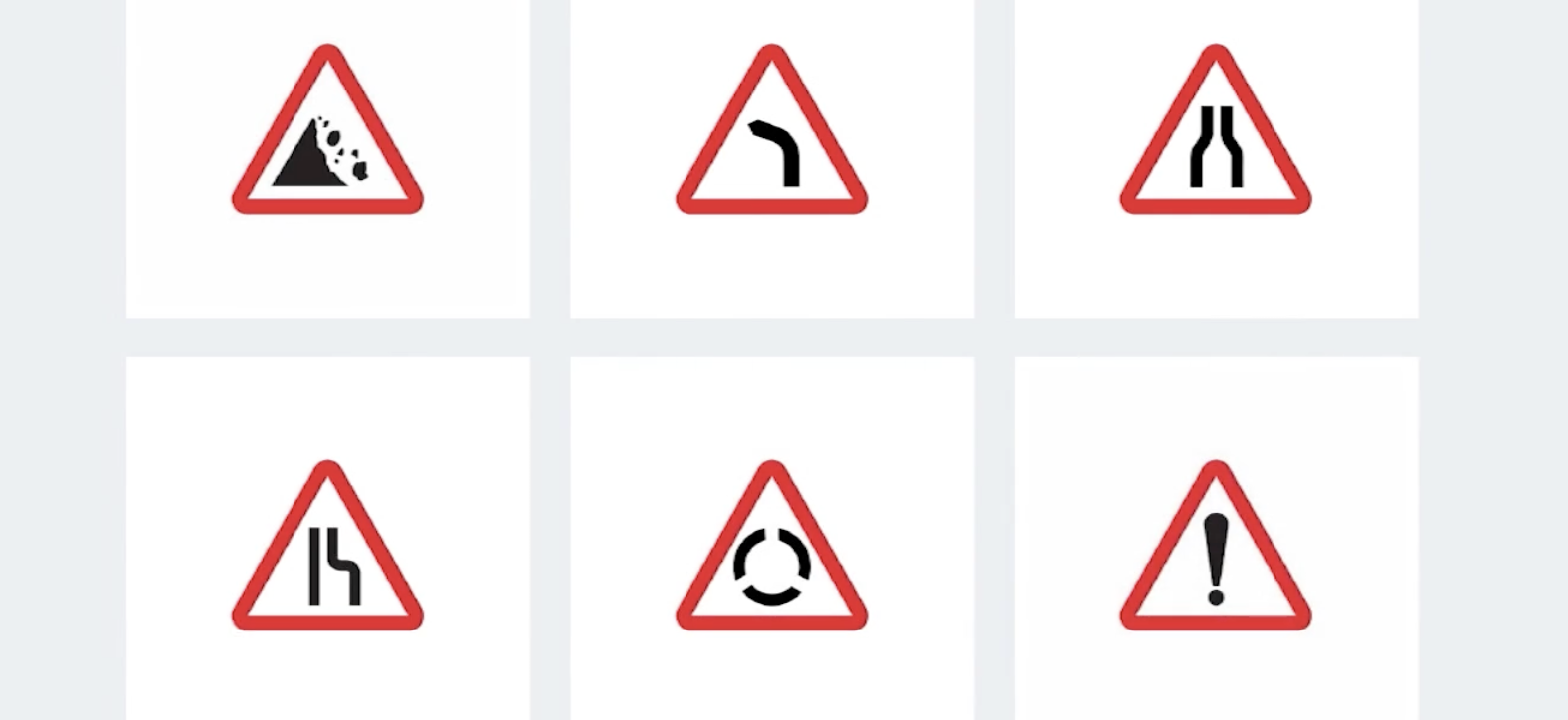
what type of sign is this
warning, danger ahead
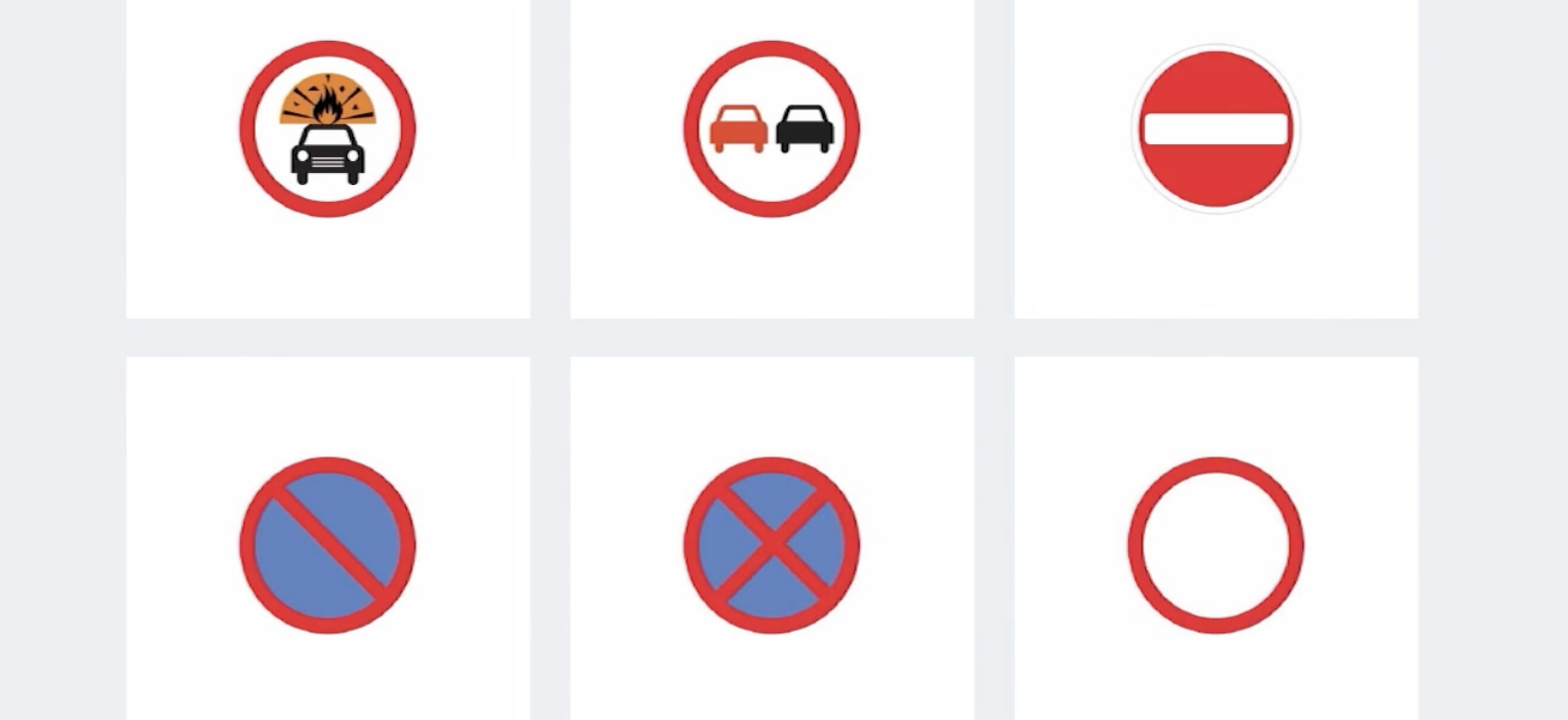
what type is this
prohibited, restriction
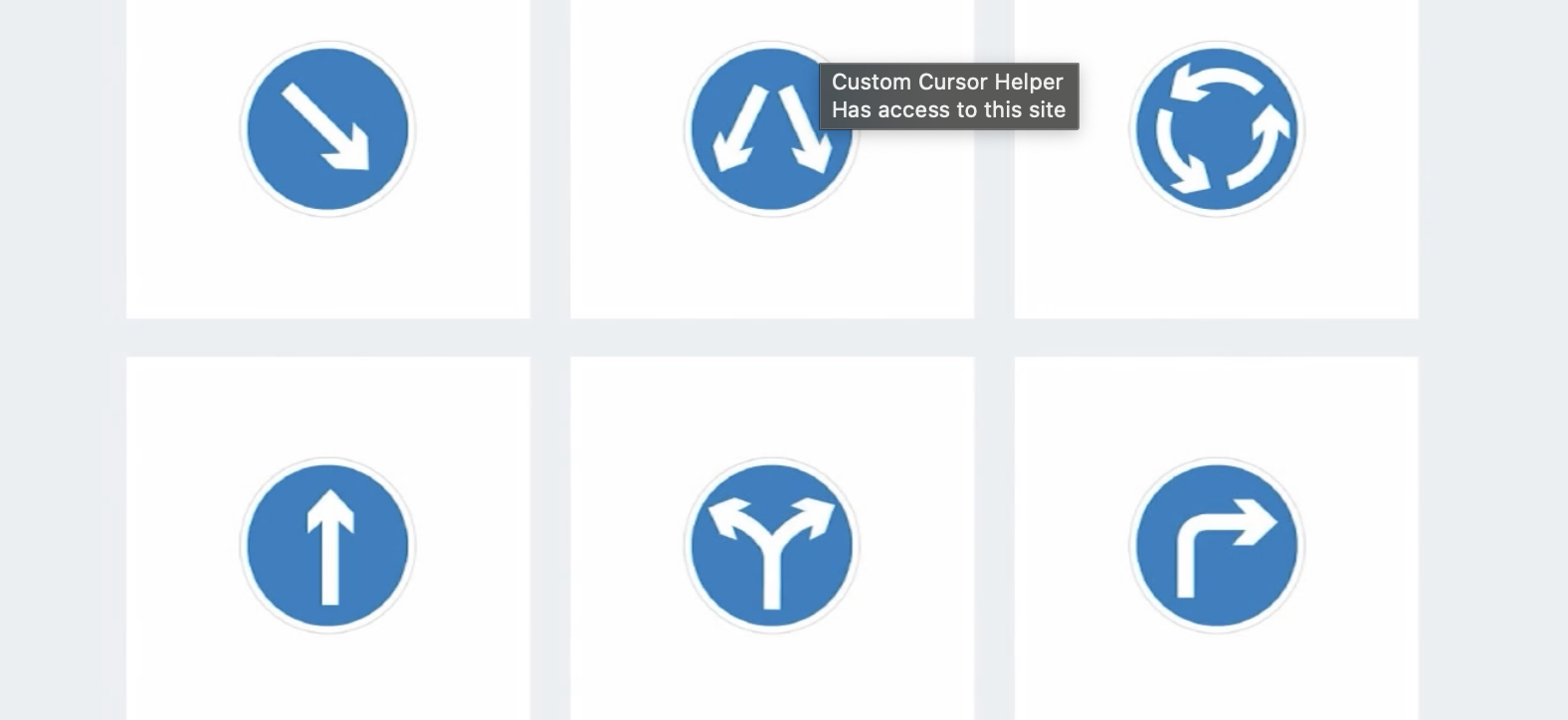
what type is this
regulatory
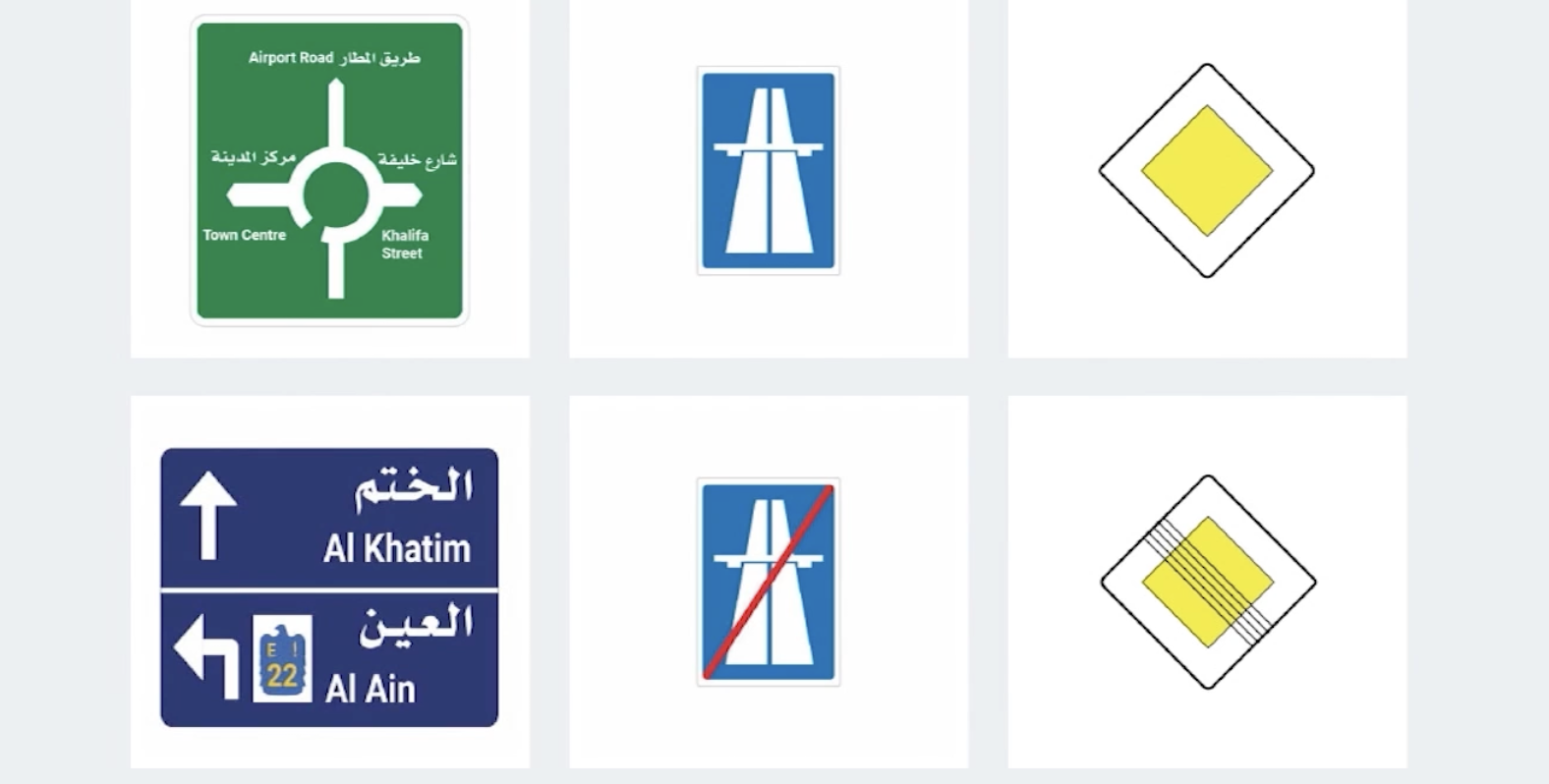
what type is this
direction sign
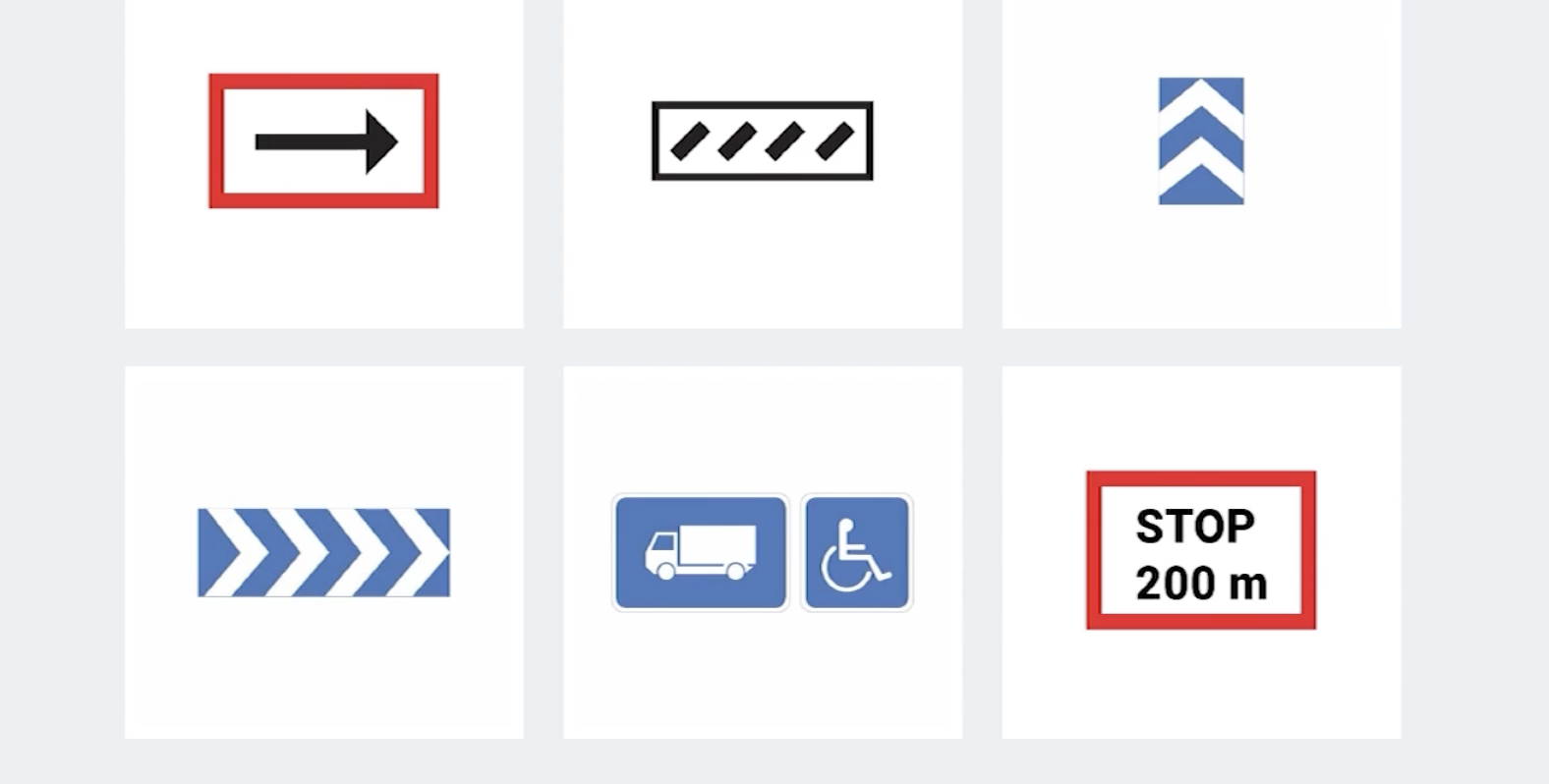
supplementary sign, usually combined with primary signs
Primary sign = The rule
🔹 Supplementary sign = Details of when/how/for whom that rule applies
ex.
Primary sign: 🚫 No entry
Supplementary sign: “Except buses”
➡ Meaning: Only buses are allowed to enter; all other vehicles are prohibited.
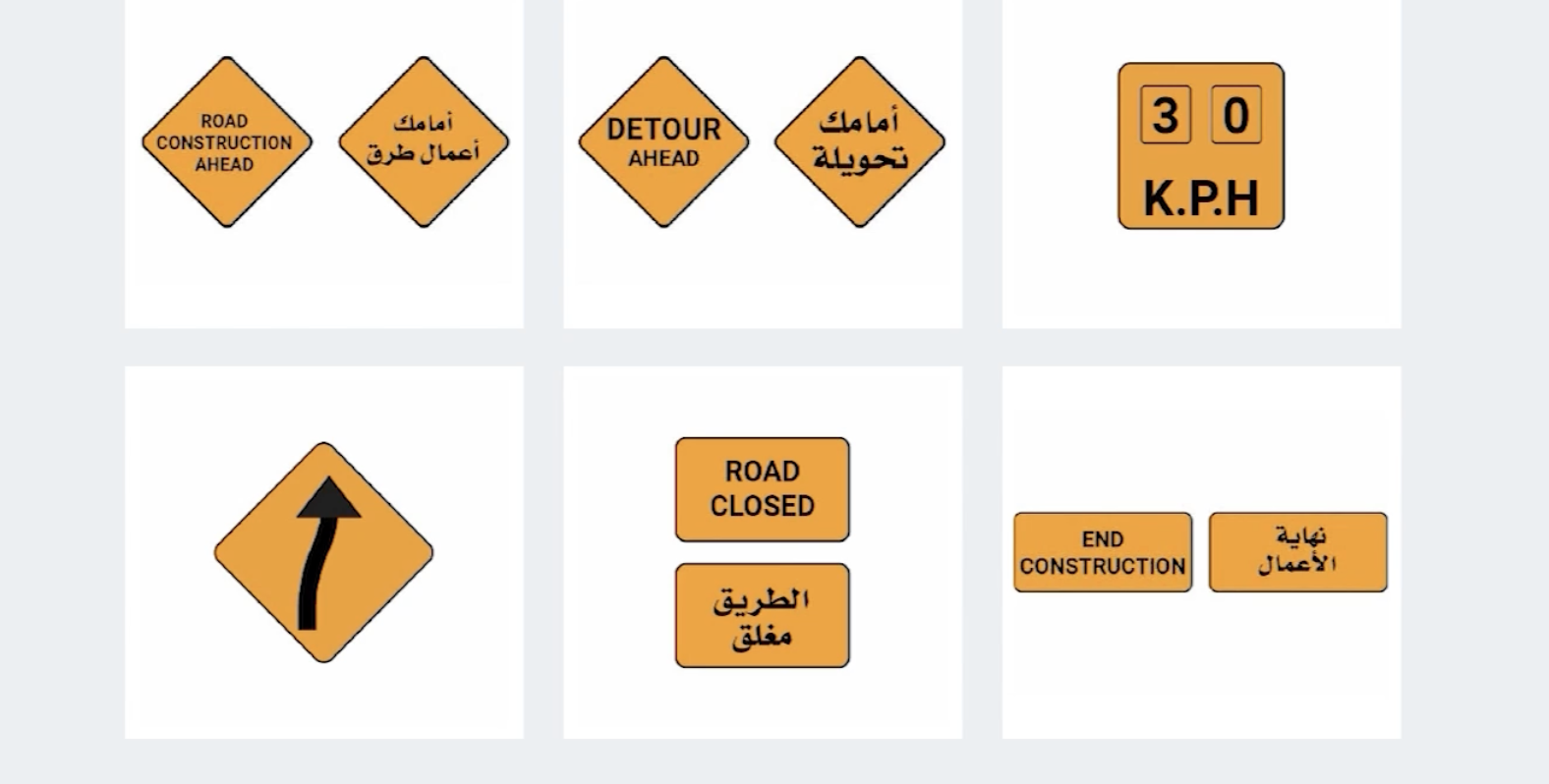
what type
temporary construction signs
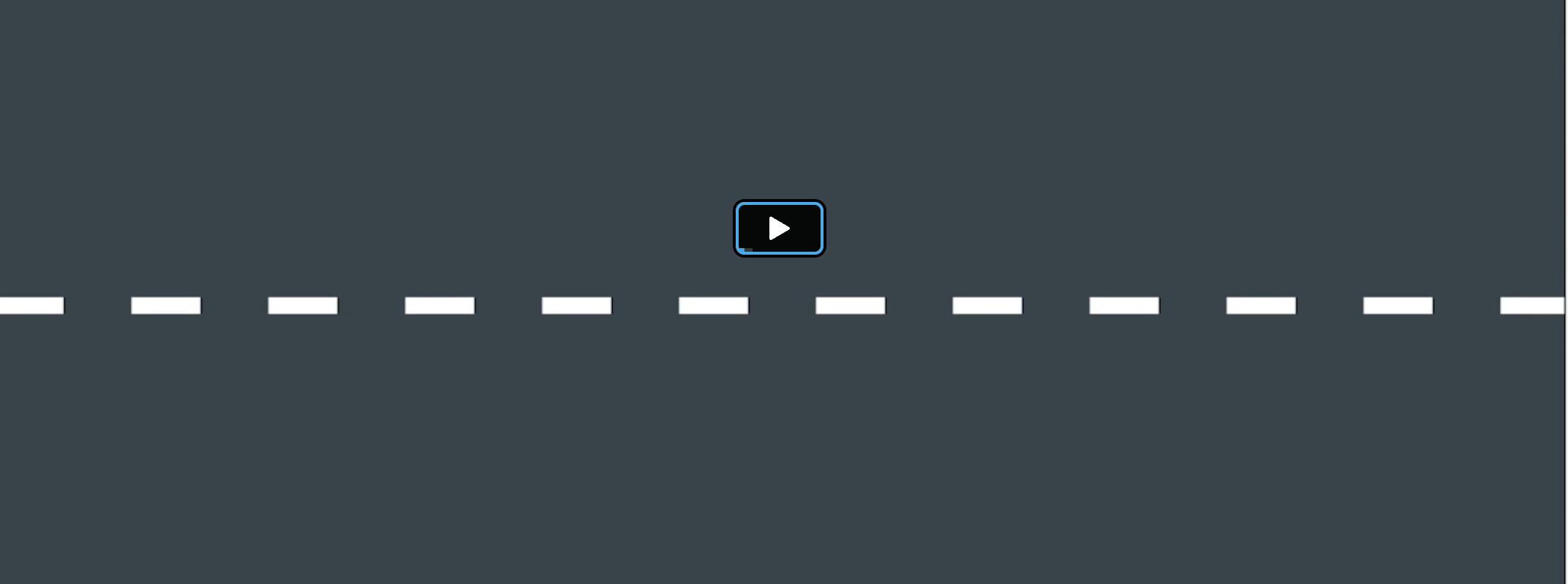
what does this mean?
Allowed to overtake, or change lanes

allowed to overtake but be careful

Not allowed to overtake or change lanes
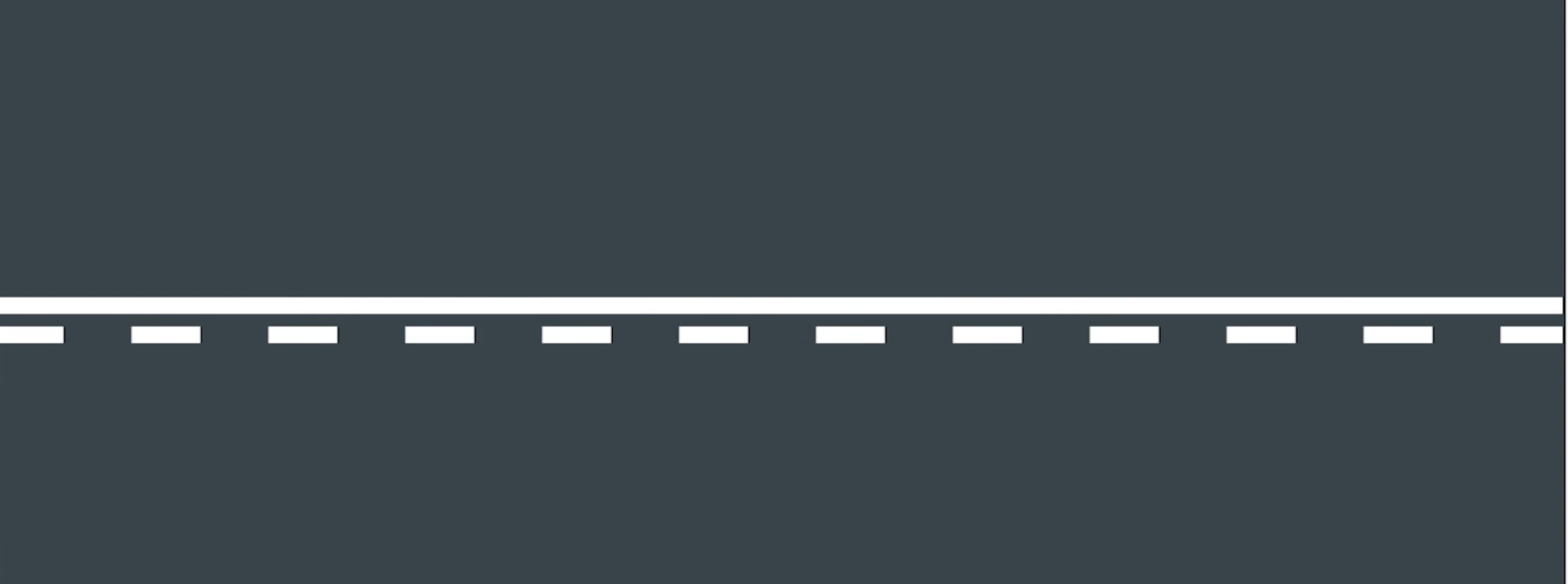
you can overtake if the broken lines are on ur side of the road
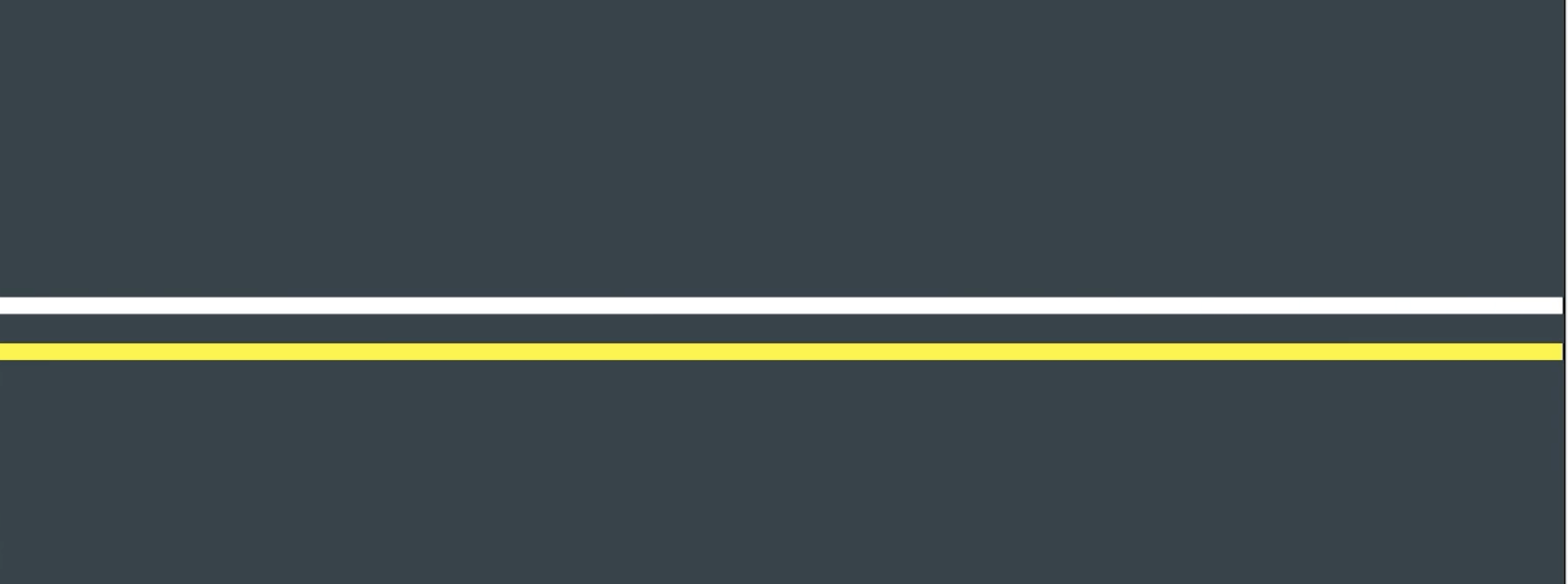
Not allowed to cross these lines
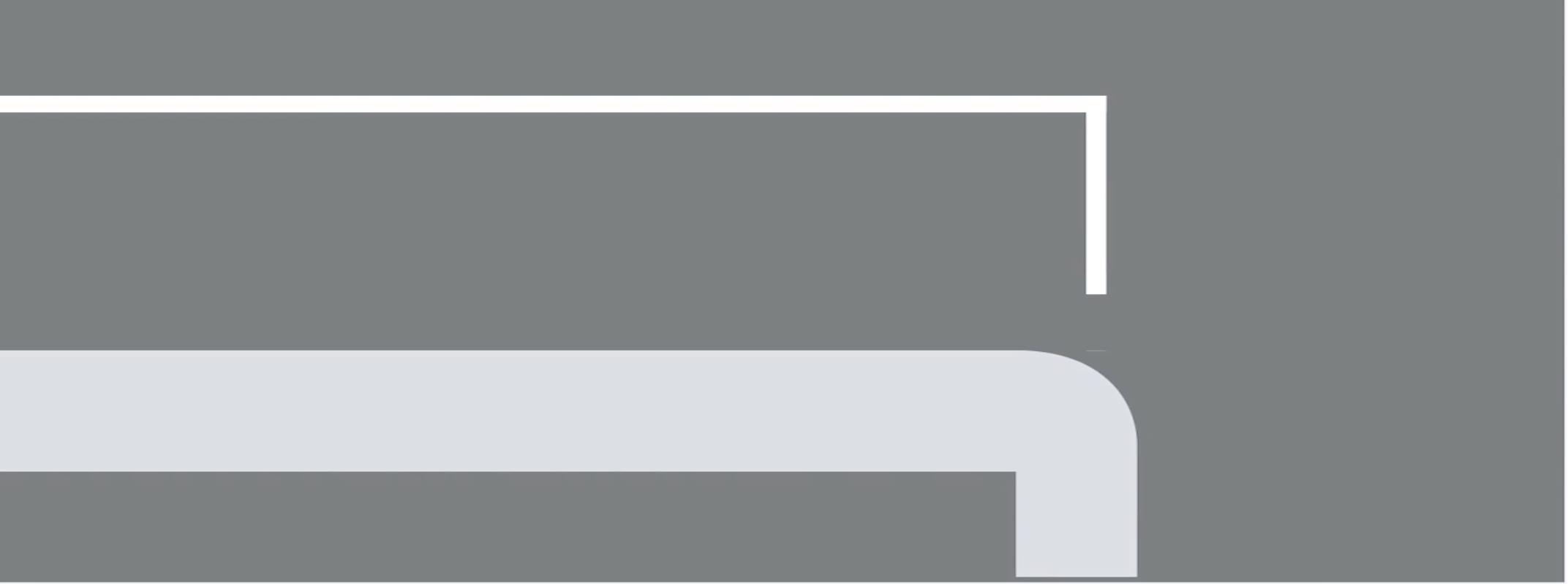
Stop line
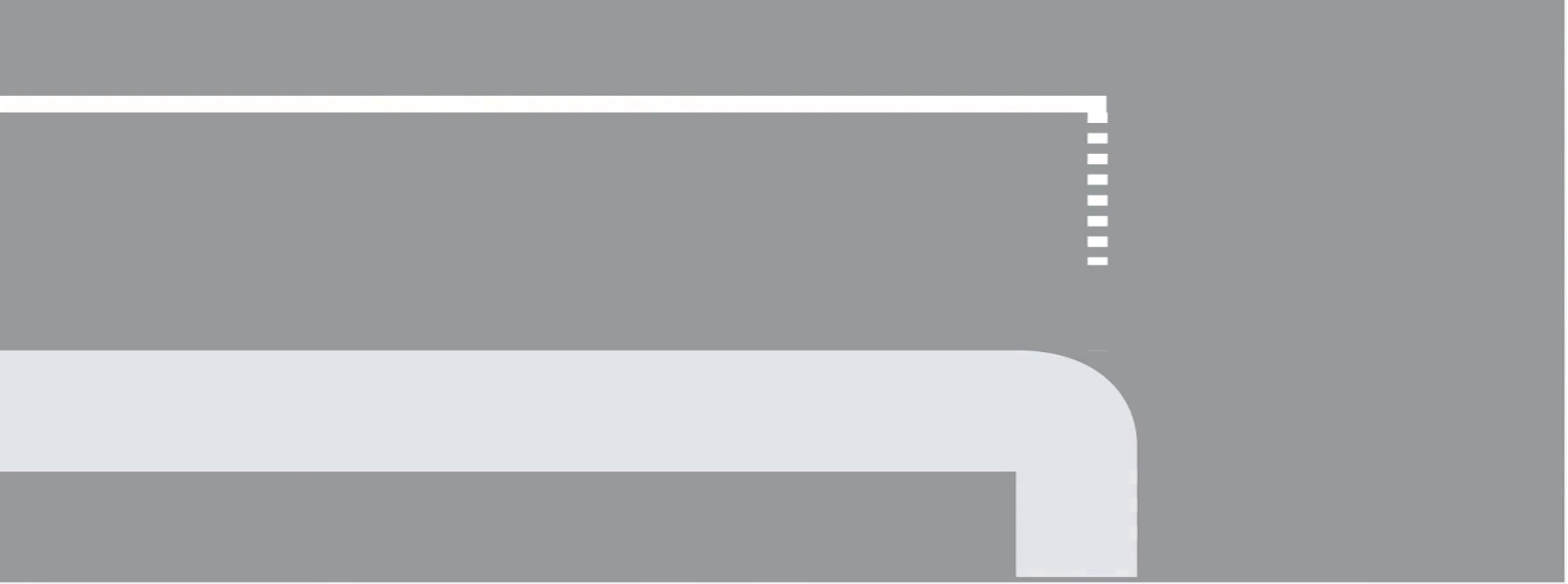
give way line
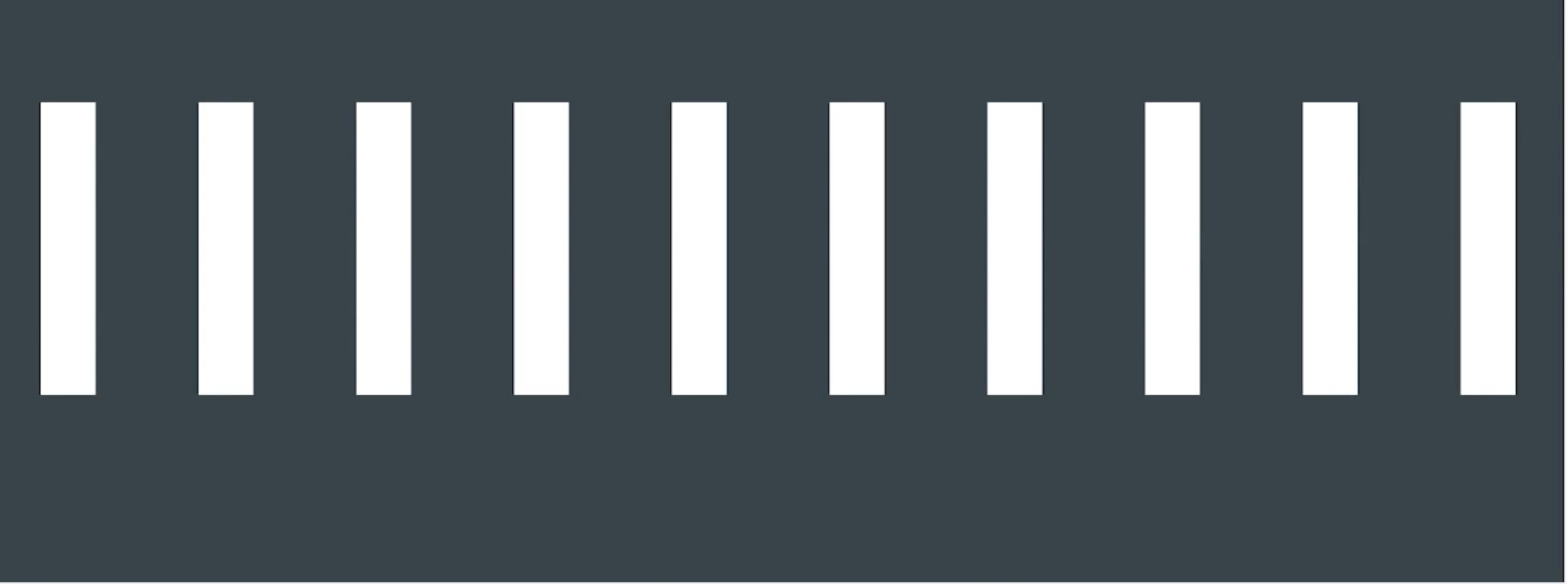
pedestrian crossing
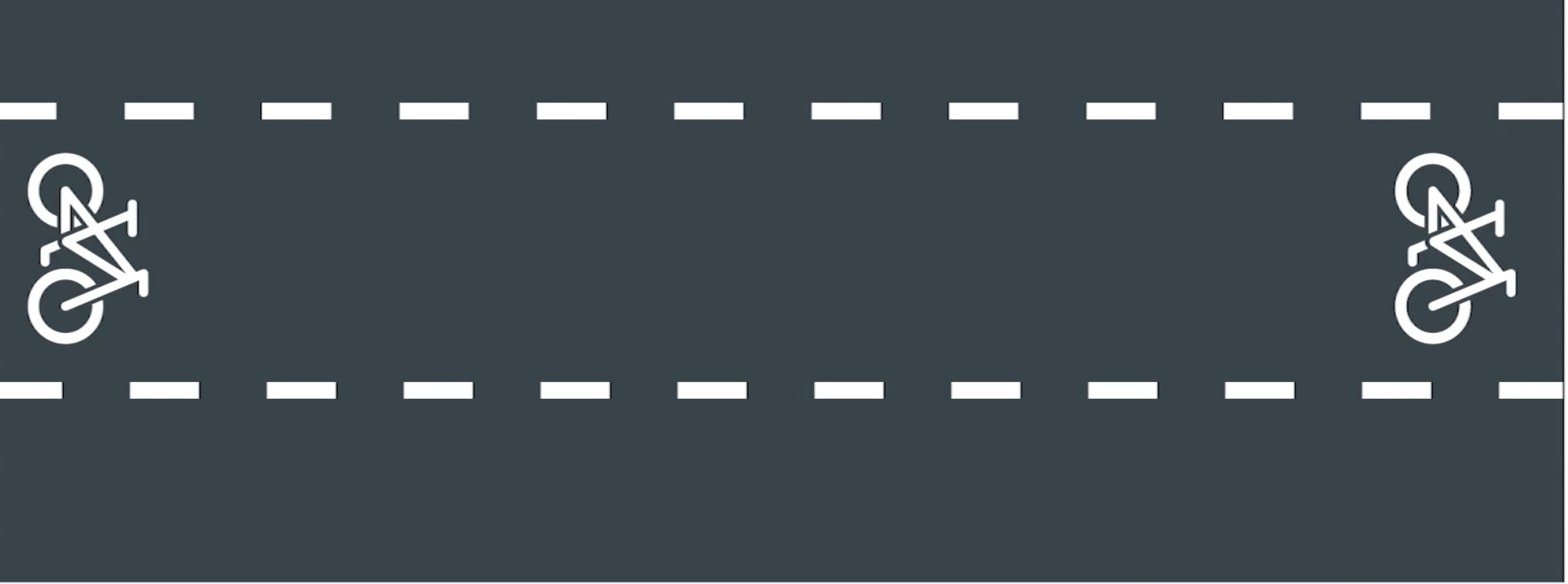
cyclist track
Main road or priority road rule
stop, give way to traffic approaching from left and right
Exit and entering rule
You must give way to all other traffic whenever you are leaving from a place on the side of the road
The turning rule
You must GIVE WAY to oncoming vehicles
What is the obstruction rule
Do NOT enter a junction, intersection, roundabout, or pedestrian crossing unless your exit is clear.
If you enter and get stuck, you block traffic — this is prohibited.
Memory Key:
👉 “If you can’t get out, don’t go in.”
🟨 Yellow box = warning of congestion (don’t stop inside it)
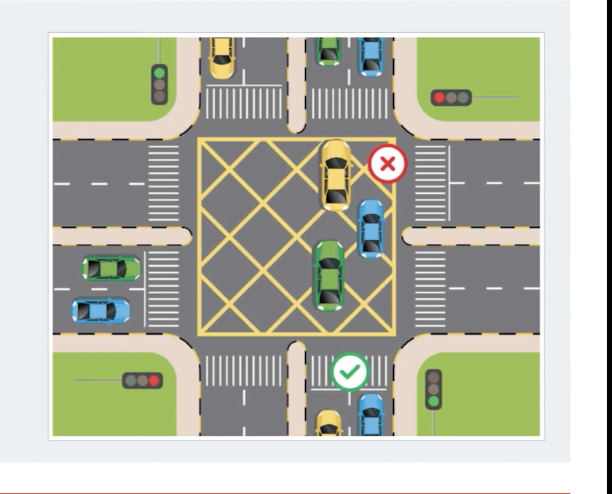
The bus rule
In cities or countries with public transport buses, buses leaving a bus stop have priority inside the city limits. They gotta pick up and drop ppl in the bus stops
When should you use indicators?
Setting off from curbs
Turning at crossroads or main roads
Changing lanes or overtaking
✅ Indicators show INTENTIONS, not commands.
They communicate your intentions to other road users. Must be used at the correct time and canceled immediately after.
When should hazard lights be used?
Emergencies or accidents
Sudden traffic jams (short time only)
During towing
❌ Not for rain, fog, or overspeeding.
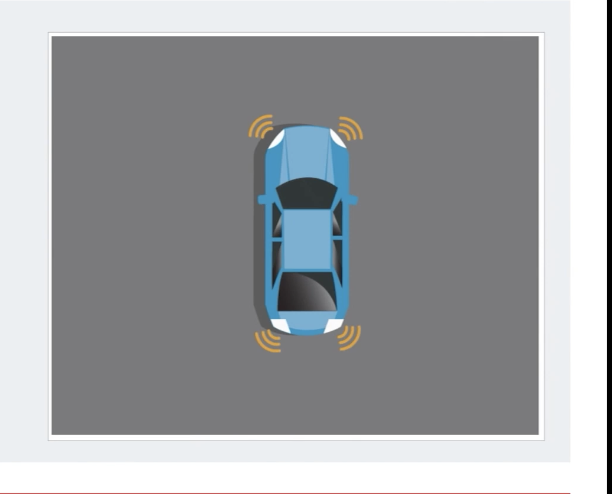
Who should use hazard lights when towing?
Only the towed vehicle, not both.
When is horn use prohibited?
etween 12 AM and 6 AM
Near schools, hospitals, mosques
✅ Horn is only for warning, short beeps only.
What is the purpose of the horn?
To warn others and prevent danger. Not for aggression or long honks.
What is the safety distance rule?
Higher speed = greater distance. Always leave enough space to react to emergencies and avoid collisions.
What factors affect distance in the city?
Flow of traffic
Traffic lights & junctions
Pedestrian crossings
Road conditions
What is the Zipper Principle?
At busy merge points (like T-junctions), vehicles from the main road and minor road take turns entering (one from each alternately).
Who has priority during emergencies?
Police
Ambulance
Civil defense
Official convoys
What is the safe side distance when overtaking cyclists?
Minimum 1.5 meters. Prefer moving to another lane if possible.
What should you avoid when passing cyclists?
Do not honk
Do not pass too closely
Common causes of pedestrian accidents?
Driver not noticing pedestrian
Blind spot blocked view
Speed too fast to react
Overtaking a stopped car at crossing
What should you do when a school bus stops to pick up children?
Stop at least 5 meters away, front and back
Wait until children are safely off the road
Who always has priority at crossings?
Pedestrians ALWAYS have priority. You must stop if a pedestrian is crossing or waiting to cross.
What is the basic positioning rule when going straight in two-way traffic?
➡ Keep to the right side
Allows overtaking vehicles space on the left
Keeps distance from oncoming traffic
Memory Cue: Right = Safe & Standard
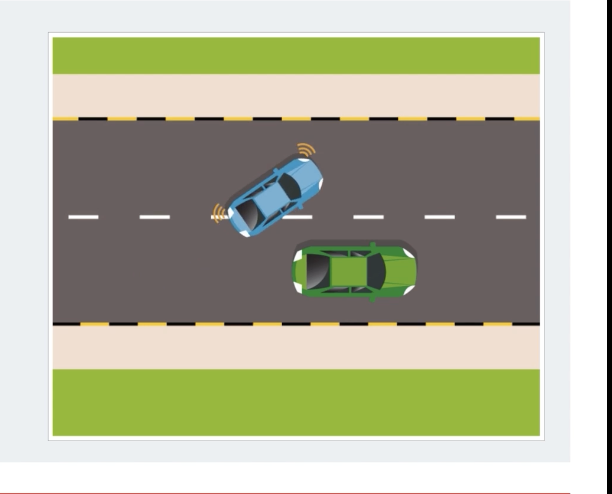
🅿 What should you do when going straight in two-way traffic with parked cars on the right?
Check mirrors & blind spot 👀
Signal left 🔔
Overtake only if road is clear
Return to right lane → maintain basic position ✅
Memory Cue: Overtake only to move back right
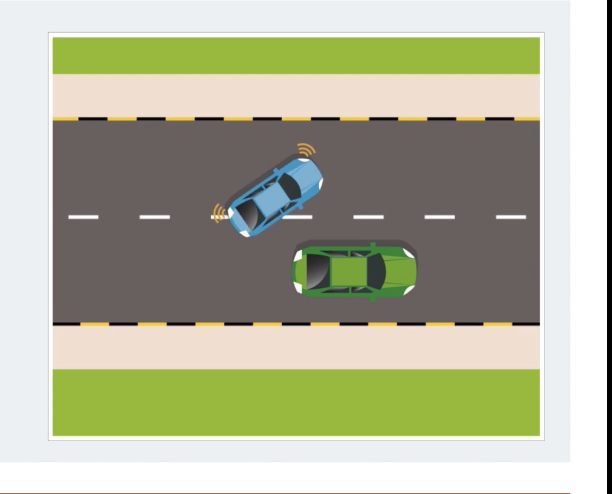
↪ What is the correct positioning when turning right in two-way traffic?
➡ Stay as close to the extreme right as possible
Shows your intention to turn
Prevents cars from overtaking on your right
Visual Cue: ↪➡ (Right lane = Right turn)
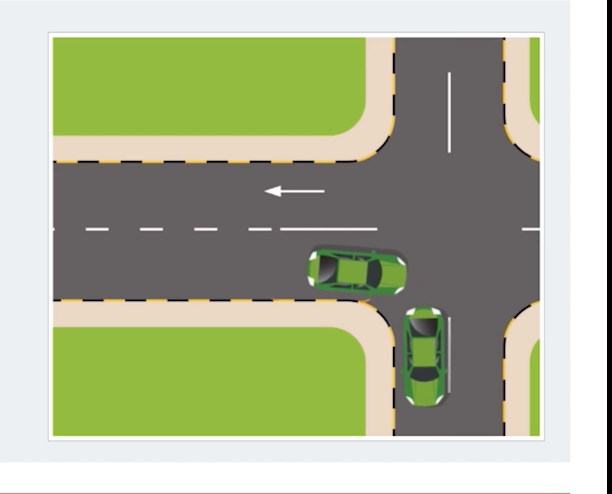
↩ What is the correct positioning when turning left in two-way traffic?
Move close to the center line
Must give way to oncoming traffic 🚗
Leaves space on right side for vehicles going straight
Visual Cue: ⬅|⬅ (Left lane near center line)
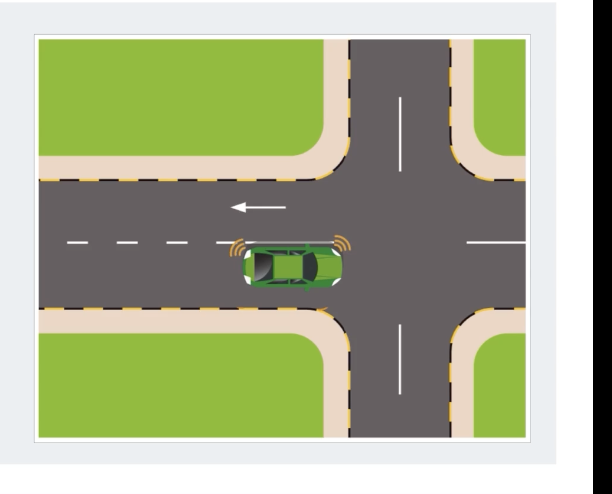
In a one-way road, which lane should you use to go straight?
➡ Extreme Right Lane
✅ It is considered the safest lane for continuing straight.
In a one-way road, which lane should you use to turn right?
➡ Extreme Right Lane
🔔 Always signal and position early to show your intention.
In a one-way road, which lane should you use to turn left?
⬅ Extreme Left Lane
⚠ Used only for left turns and U-turns.
🔄 In a one-way road, from which lane is a U-turn permitted?
⬅ Only from the Extreme Left Lane
🚫 U-turns are NOT allowed from any other lane.
🧭 When should you position your vehicle into the correct lane on a one-way road?
✅ Well in advance before reaching the junction
📍 Use road markings (arrows) to guide your lane choice.
What is a One-Way Road?
A road where all vehicles travel in the same direction only.
No traffic comes from the opposite side.
Visual: ⬅⬅⬅ (all arrows same way)
What is a Two-Way Road?
A road where traffic flows in both directions — one lane goes forward, the other lane goes opposite.
Visual: ⬅➡ (cars going opposite directions)
What is the rule for turning left from a one-way street?
Move into the extreme left lane
✅ Only left lane allows left turn or U-turn. (not suddenly, but a while before)
What should you do if two cars are turning left at the same time and space is limited?
Make eye contact with the other driver 👍
Allow the other driver to go first if unclear
Never risk turning if vision is obstructed
Memory Cue: Eye contact = communication
🚦 What lane should you choose if continuing straight in one-way traffic?
Use the extreme right lane (safest and default lane).
What is the rule for lane positioning before reaching a junction?
Choose the correct lane in advance:
📍 Right lane → for straight or right turns
📍 Left lane → for left turns or U-turns
Memory Cue: Lane = Intention
Why is correct lane positioning important?
Prevents accidents
Clearly shows intention
Allows smooth traffic flow
Ensures you do not block or confuse other road users
What is the first rule when approaching a roundabout?
Give way to all vehicles already inside the roundabout.
Who has priority when you enter a roundabout?
Vehicles approaching from the left have priority.
Which lane should you use to turn right at a roundabout?
Use the extreme right lane, indicate right, and join the same lane.
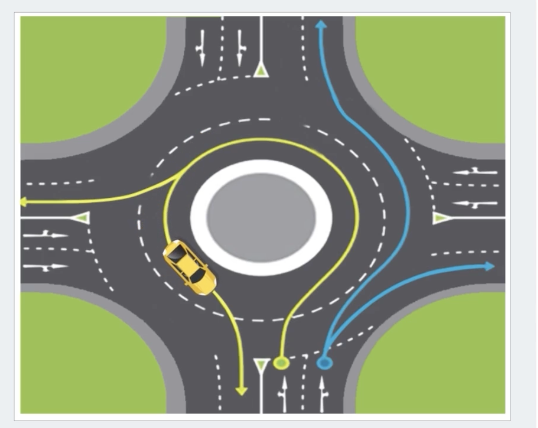
Which lane should you use to go straight in a roundabout?
Stay in the extreme right lane and do not indicate while entering.
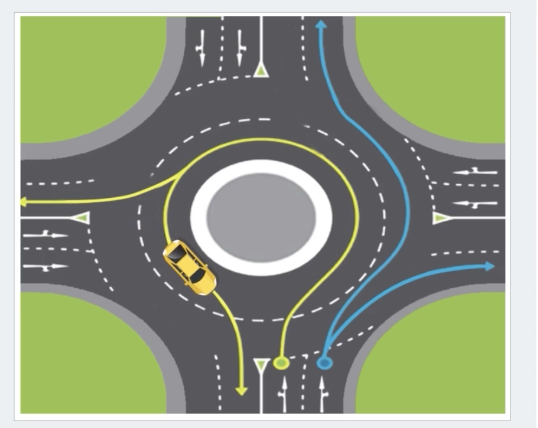
Which lane should you use for turning left or making a U-turn at a roundabout?
Use the extreme left lane and indicate left while entering.
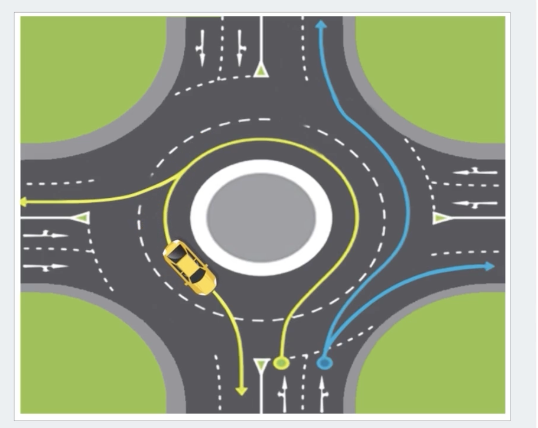
What is the exit rule in roundabouts?
Always use the right indicator when exiting the roundabout, regardless of your entry lane.
What actions are prohibited inside a roundabout?
Lane changing, reversing, stopping, and overtaking are not allowed.
Why must you be cautious of long vehicles in roundabouts?
Long vehicles may need to use more than one lane due to a wide turning radius, so do not enter if a heavy vehicle has already entered.
What is the scanning technique?
Continuously checking mirrors and shifting your gaze to observe surroundings for better awareness.
What is the correct behavior in congested traffic lanes?
Stay patient, maintain a safe distance, avoid unnecessary lane changes, and continuously scan surroundings.
What is the correct sequence for changing lanes safely?
Check center mirror
Check side mirror
Look over shoulder
Turn on indicator
Check mirrors again
Move smoothly into the lane
From which side is overtaking allowed?
Only from the left side.
What should you do if another vehicle is overtaking you?
Maintain speed or slow down slightly; do not accelerate.
When is overtaking prohibited?
Before or on an uncontrolled(no signs, no officers) pedestrian crossing
Before or while crossing a junction or intersection
Where your view of the road is obstructed(blocked)
When a vehicle ahead is turning or approaching a junction/crossing
whats the difference between junction and intersection?
Term | Meaning | Example |
|---|---|---|
Junction | Any place roads meet or join | T-junction, Y-junction, roundabout, intersection |
Intersection | A junction where roads cross paths | Crossroad, traffic light intersection |
When is overtaking from the right side allowed?
When the vehicle ahead has clearly signaled and positioned to turn left
At a crossroad controlled by traffic lights
When is overtaking NOT allowed?
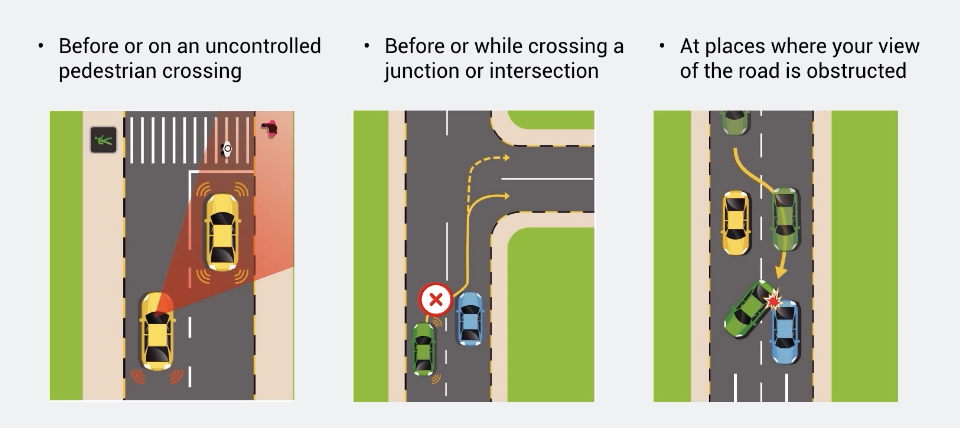
What is the rule for overtaking on uphill roads with solid and broken lines?
Do not overtake if the solid line is on your side; it indicates restricted vision and prohibited overtaking.
Where is stopping or parking prohibited?
Junctions
Hilly roads
Bends and turns
Private entrances
Locations that obstruct(block) the view of other drivers
near fire hydrants

What does a red-colored curb indicate?
No stopping or parking is allowed; the area is reserved for emergency vehicles.
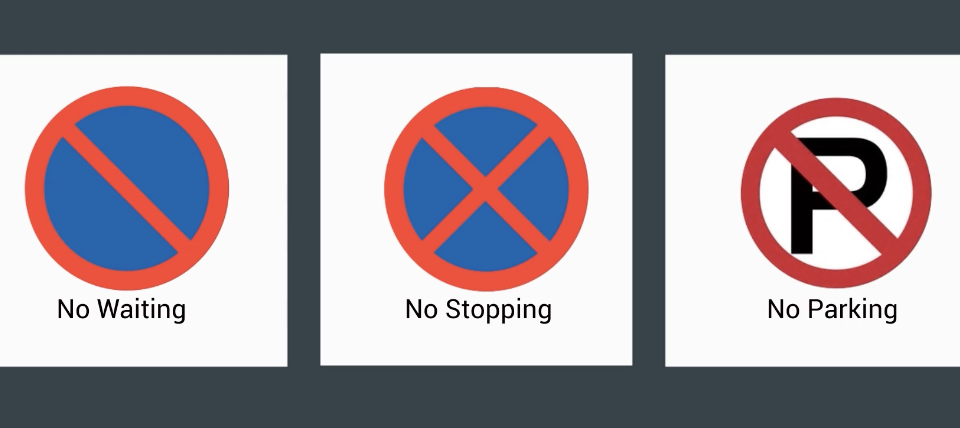
How should you position your wheels when parking uphill?
Turn wheels toward the road to prevent the vehicle from rolling backward. (so car facing the direction the road is going)
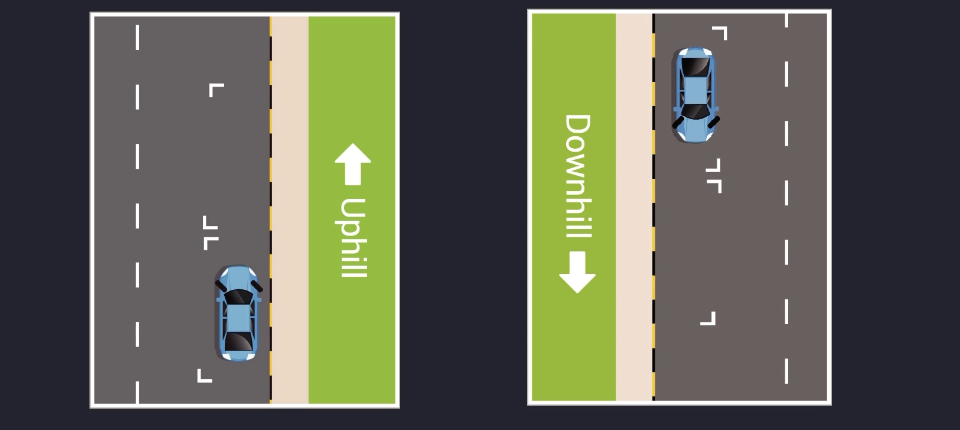
How should you position your wheels when parking downhill?
Turn wheels toward the curb to prevent the vehicle from rolling forward. (car facing the direction the road is going not opposite)
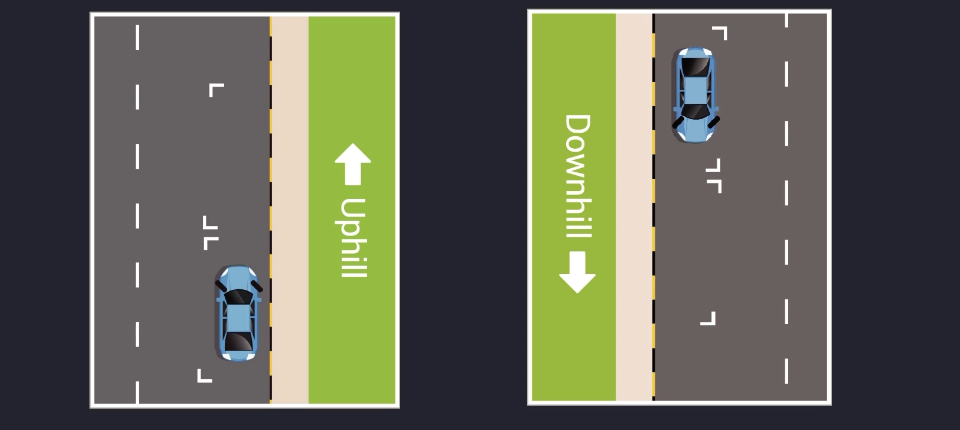
From which lane is a U-turn permitted?
Only from the extreme left lane.
How can you change direction on a two-way road if U-turn is not available?
You may reverse in a safe area where you can be seen clearly by other road users.
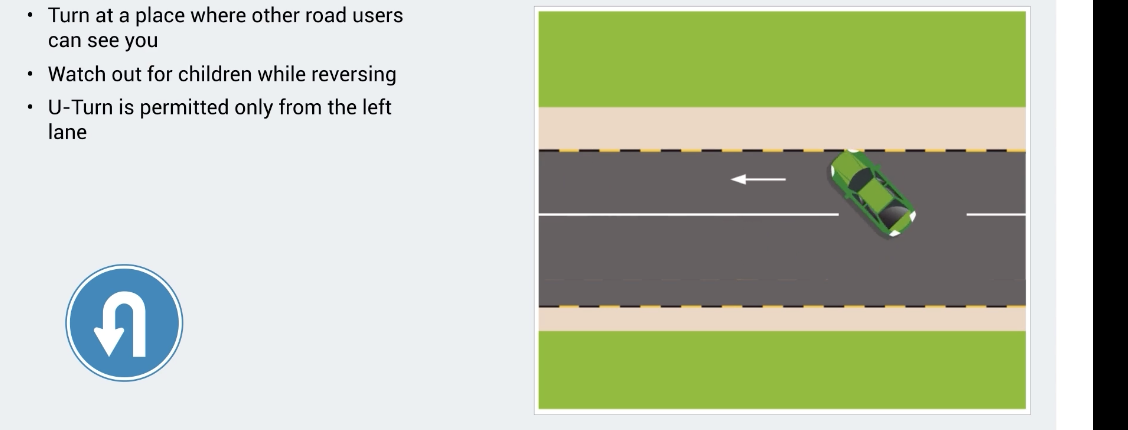
What must you do before leaving your vehicle parked?
Apply parking brake
Remove the key and lock the car
Park only in legal areas
Ensure you are not causing danger or obstruction
How do you change lane and pass other vehicles on the road?
Think ahead
Adopting speed
Scan mirrors
Check blind spots
Use indicator
whats the difference between overtaking and undertaking and when is each done?
🔷 Normal rule:
Overtaking is only allowed from the left side in the UAE.
🔷 Exception (when overtaking from the right is allowed):
✅ In congested traffic when the right lane is moving faster or open.
this is called undertaking — normally not allowed, but accepted in slow-moving or jammed traffic if the right lane is flowing and you're not weaving dangerously.
What systematic safety check should you perform before long-distance travel?
Memorize the acronym POWER:
Petrol
Oil
Water
Electric (battery, lights)
Rubber (tires)
What factors should you consider before traveling outside the city?
Weather
Destination
State of the road
Driver’s manual advice
Vehicle condition